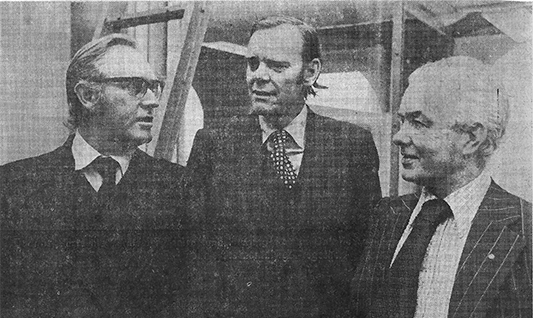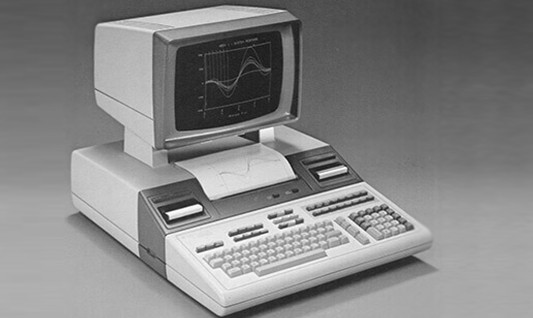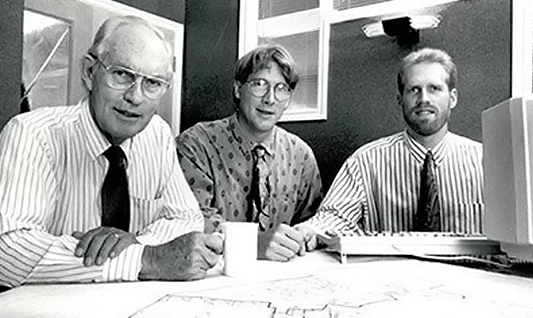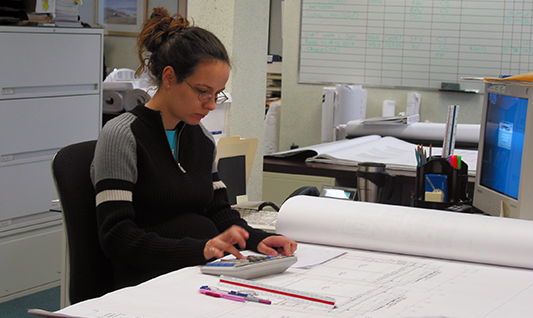
DEDICATION
All great stories begin with an idea. Vermeulens was Buster and Monica’s. Through tenacity, determination, courage, and love, Vermeulens lives on.
In celebrating our 50 year anniversary, we reflect on that story.
Thank you to the past, present, and future staff for making Vermeulens what is today and what it will become in the future….
A continued leader in pre-construction cost control!
James Vermeulen
In celebrating our 50 year anniversary, we reflect on that story.
Thank you to the past, present, and future staff for making Vermeulens what is today and what it will become in the future….
A continued leader in pre-construction cost control!
James Vermeulen
PROLOGUE
Just like their brand, Vermeulens has evolved into one of the leading pre-construction cost advisors in the industry. Their track record, vast experience, and economic knowledge of the global economic drivers have made them a confidant to many owners and architects and an integral part of the team as a trusted advisor.
1960's
Prior to starting Vermeulens, A.J. (Buster) Vermeulen was in Partnership with Frank Helyar. Together they wanted to develop a standard for pre-construction estimating that would be an improvement over the traditional trade-based estimating. They established the Elemental Estimating Method which grouped cost by function or design discipline regardless of what trade would build it. Expo '67 in Montreal provided a wonderful testing ground for this new approach. The new Elemental Estimating Method passed with flying colors and became the standard for the Canadian Institute of Quantity Surveyors.
1970's
Buster Vermeulen started Vermeulens in 1972 with clients in both Toronto and Boston. In 1973, with tremendous foresight, Buster decided that computers would be the way of the future in estimating. He purchased our first computer from Hewlett Packard in 1975 for 75% of the cost of a house in Toronto. This early desktop computer had a full keyboard, an 80 character LED display, dual cassette tape drive mass storage, and a built-in thermal printer. As there was no software available, James Vermeulen, while in high school, wrote an early spreadsheet-like program to streamline the entire cost reporting process. This replaced the manual calculator and typing that produced all cost reports. In addition, editing cost reports were made significantly easier.
1980's
Buster Vermeulen purchased our second computer from Hewlett Packard in 1981, the same year IBM came out with their first PC. However, this new desktop computer was now a full-color graphic computer with floppy disc drives. Once again, James Vermeulen, now in university, did the programming. This time, not only was the cost reporting program enhanced, a complete digitizing program was written to calculate areas including graphic output. Truly, a picture is worth a thousand words, and this digitizing program revolutionized our reporting to clients. This graphical analysis has stood the test of time and is an integral part of our cost control process on current technology platforms.
1990's
With the development of parallel estimating, Vermeulens modified the assemblies based reporting to a hybrid line item trade/elemental approach. This facilitated the advantage of having both elemental parameters and trade comparisons available in every cost report. This was successfully extended to mechanical and electrical estimating and was adopted by the Canadian Institute of Quantity Surveyors as the new standard for elemental estimating. Later in the decade, our reports adopted a parallel multi-component format which facilitated understanding costs attributable to different program or construction types (such as New/Renovation). Along with our database of graphic area analysis, the “whole cost” program estimating method was developed for complex building types. This method attributes all costs associated with a particular room in a building program for the purpose of approximating the impact of re-sizing or eliminating that space without having to re-design and re-estimate.
2000's
Vermeulens created a database of projects spanning 30 years of construction cost and graphic analysis information. This led to Vermeulens Index of bid results, the first index based on actual bid prices for complex projects in the non-residential construction market. Presented at national conferences since 2007, our Market Outlook continues to accurately forecast escalation in all markets across North America. Near the end of this decade, we developed the Real Time Reconciliation process to track all estimating and design review items to reconcile scope to budget. Along with market analysis, we developed benchmarking to provide bid data-based estimates.
2010's
Green at No Cost, written by Richard Vermeulen, is a Value Process based system of evaluating all aspects of building design and function leading to the first comprehensive cost/benefit based approach to urban and regional planning. Green at No Cost takes urban design elements apart, identifies optimal pieces, and puts these pieces together in optimal relations. To enhance the integrated design process, Value Process reports were developed to comprehensively track all value analysis, reconciliation process, options, sustainability, and design optimization.
2020's
EPILOGUE
Not only is this a time to celebrate 50 years of business, but it is also the beginning of a new era in ownership for Vermeulens. Through the years, ownership has been transferred from founder to 2 sons, and now we celebrate the addition of 6 highly capable leaders making the ownership a team of 8, going beyond the Vermeulens’ name. The new ownership team brings a wealth of experience in construction economics and business. A combination of people who are equally talented, committed, and passionate in what they have attained, continue to achieve, and strive to accomplish. They will ensure that the Vermeulens legacy will continue to thrive into the future. We are excited to announce our new ownership team on our 50 year anniversary.
As we begin our next decade at Vermeulens, we are looking forward to continuing to help our clients design and build very successful projects that meet or exceed their vision. As construction economists, we understand today’s market, and can advise owners and their design teams on future construction costs and procurement strategies. This allows them to make informed decisions to realize these successful project outcomes. This is our Mission…


DEDICATION
All great stories begin with an idea. Vermeulens was Buster and Monica’s. Through tenacity, determination, courage, and love, Vermeulens lives on.
In celebrating our 50 year anniversary, we reflect on that story.
Thank you to the past, present, and future staff for making Vermeulens what is today and what it will become in the future….
A continued leader in pre-construction cost control!
James Vermeulen
In celebrating our 50 year anniversary, we reflect on that story.
Thank you to the past, present, and future staff for making Vermeulens what is today and what it will become in the future….
A continued leader in pre-construction cost control!
James Vermeulen
PROLOGUE

Just like their brand, Vermeulens has evolved into one of the leading pre-construction cost advisors in the industry. Their track record, vast experience, and economic knowledge of the global economic drivers have made them a confidant to many owners and architects and an integral part of the team as a trusted advisor.
1960's

Prior to starting Vermeulens, A.J. (Buster) Vermeulen was in Partnership with Frank Helyar. Together they wanted to develop a standard for pre-construction estimating that would be an improvement over the traditional trade-based estimating. They established the Elemental Estimating Method which grouped cost by function or design discipline regardless of what trade would build it. Expo '67 in Montreal provided a wonderful testing ground for this new approach. The new Elemental Estimating Method passed with flying colors and became the standard for the Canadian Institute of Quantity Surveyors.
1970's

Buster Vermeulen started Vermeulens in 1972 with clients in both Toronto and Boston. In 1973, with tremendous foresight, Buster decided that computers would be the way of the future in estimating. He purchased our first computer from Hewlett Packard in 1975 for 75% of the cost of a house in Toronto. This early desktop computer had a full keyboard, an 80 character LED display, dual cassette tape drive mass storage, and a built-in thermal printer. As there was no software available, James Vermeulen, while in high school, wrote an early spreadsheet-like program to streamline the entire cost reporting process. This replaced the manual calculator and typing that produced all cost reports. In addition, editing cost reports were made significantly easier.
1980's

Buster Vermeulen purchased our second computer from Hewlett Packard in 1981, the same year IBM came out with their first PC. However, this new desktop computer was now a full-color graphic computer with floppy disc drives. Once again, James Vermeulen, now in university, did the programming. This time, not only was the cost reporting program enhanced, a complete digitizing program was written to calculate areas including graphic output. Truly, a picture is worth a thousand words, and this digitizing program revolutionized our reporting to clients. This graphical analysis has stood the test of time and is an integral part of our cost control process on current technology platforms.
1990's

With the development of parallel estimating, Vermeulens modified the assemblies based reporting to a hybrid line item trade/elemental approach. This facilitated the advantage of having both elemental parameters and trade comparisons available in every cost report. This was successfully extended to mechanical and electrical estimating and was adopted by the Canadian Institute of Quantity Surveyors as the new standard for elemental estimating. Later in the decade, our reports adopted a parallel multi-component format which facilitated understanding costs attributable to different program or construction types (such as New/Renovation). Along with our database of graphic area analysis, the “whole cost” program estimating method was developed for complex building types. This method attributes all costs associated with a particular room in a building program for the purpose of approximating the impact of re-sizing or eliminating that space without having to re-design and re-estimate.
2000's

Vermeulens created a database of projects spanning 30 years of construction cost and graphic analysis information. This led to Vermeulens Index of bid results, the first index based on actual bid prices for complex projects in the non-residential construction market. Presented at national conferences since 2007, our Market Outlook continues to accurately forecast escalation in all markets across North America. Near the end of this decade, we developed the Real Time Reconciliation process to track all estimating and design review items to reconcile scope to budget. Along with market analysis, we developed benchmarking to provide bid data-based estimates.
2010's

Green at No Cost, written by Richard Vermeulen, is a Value Process based system of evaluating all aspects of building design and function leading to the first comprehensive cost/benefit based approach to urban and regional planning. Green at No Cost takes urban design elements apart, identifies optimal pieces, and puts these pieces together in optimal relations. To enhance the integrated design process, Value Process reports were developed to comprehensively track all value analysis, reconciliation process, options, sustainability, and design optimization.
2020's

EPILOGUE
Not only is this a time to celebrate 50 years of business, but it is also the beginning of a new era in ownership for Vermeulens. Through the years, ownership has been transferred from founder to 2 sons, and now we celebrate the addition of 6 highly capable leaders making the ownership a team of 8, going beyond the Vermeulens’ name. The new ownership team brings a wealth of experience in construction economics and business. A combination of people who are equally talented, committed, and passionate in what they have attained, continue to achieve, and strive to accomplish. They will ensure that the Vermeulens legacy will continue to thrive into the future. We are excited to announce our new ownership team on our 50 year anniversary.
James Vermeulen, Managing Principal
Richard Vermeulen, Senior Principal
Craig Chiarelli, Principal
Zach Bergeron, Principal
Rivlyn Manning, Principal
Marisol Serrao, Principal
Melissa Chabot, Principal
Blair Tennant, Principal
Buster Vermeulen, Founder
James Vermeulen, Managing Principal
Richard Vermeulen, Senior Principal
Craig Chiarelli, Principal
Zach Bergeron, Principal
Rivlyn Manning, Principal
Marisol Serrao, Principal
Melissa Chabot, Principal
Blair Tennant, Principal
As we begin our next decade at Vermeulens, we are looking forward to continuing to help our clients design and build very successful projects that meet or exceed their vision. As construction economists, we understand today’s market, and can advise owners and their design teams on future construction costs and procurement strategies. This allows them to make informed decisions to realize these successful project outcomes. This is our Mission…






